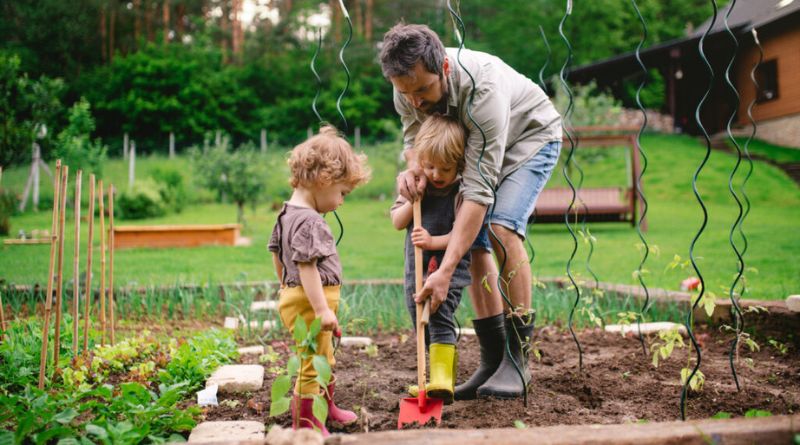Embarking on a gardening journey? Welcome to the lush world of plants! Our blog unveils the “Top 10 Gardening Tips for Beginners,” equipping you with essential know-how to cultivate a thriving garden oasis. Whether you’re a green thumb novice or an aspiring horticulturist, these practical insights will transform your gardening experience. From soil enrichment to proper watering techniques, we’ve curated a comprehensive guide to kickstart your botanical adventure. Let’s dig in and watch your garden bloom!
10 Gardening Tips for Beginners
Understanding Your Zone

Before immersing yourself in the world of gardening, it’s crucial to acquaint yourself with your USDA hardiness zone. This classification system serves as a geographical indicator, aiding in the selection of plants that flourish in your specific climate. These zones delineate temperature ranges and growing conditions, providing a roadmap for choosing flora ideally suited to your locale. Dive into zone maps and peruse plant labels for accurate information, enabling informed decisions and fostering a garden environment that thrives harmoniously with its surroundings.
Also Read: 7 Best Cool Season Annuals For Winter Gardens
Quality Soil Matters
At the heart of every flourishing garden lies the soil – its quality can make or break your botanical haven. Invest in a nutrient-rich potting mix that ensures proper drainage and is fortified with organic matter. Recognize that different plants harbor distinct soil preferences, so tailor your soil choice to meet the unique needs of your green companions. Regularly amend the soil with compost to enhance fertility, improve texture, and bolster water retention, creating an optimal environment conducive to robust plant growth.
Mastering Watering Techniques
The delicate balance of watering is paramount to the well-being of your plants. Avoid the pitfalls of overwatering or underwatering by developing a customized watering routine based on the unique requirements of each plant. Regularly assess soil moisture levels, adjusting the frequency and volume of watering accordingly. Employ efficient watering tools such as drip irrigation or soaker hoses, directing water precisely to the roots, thereby preventing diseases and promoting judicious water usage.
Selecting the Right Plants
Choosing the right plants is an art in itself, requiring consideration of your gardening goals, skill level, and available sunlight. Deliberate on factors such as plant size, growth habits, and maintenance needs. For beginners, start with easy-to-care-for varieties to build confidence and experience. Consider incorporating native plants, known for their adaptability to local conditions, thus fostering a more sustainable and resilient garden ecosystem.
Sunlight Essentials

Sunlight serves as the lifeblood of plant growth. To ensure optimal development, identify the sunlight requirements of your chosen plants and position them accordingly. Most vegetables and flowering plants thrive in full sun, basking in a minimum of 6-8 hours of direct sunlight daily. For shade-loving plants, strategically place them in areas with limited sunlight, guaranteeing that each plant receives the light it needs for robust health.
Practical Pest Management
Guard your garden against the threat of pests, notorious for swiftly causing damage. Regularly inspect plants for signs of infestation, employing preventive measures. Introduce natural predators like ladybugs or resort to organic pesticides when necessary. Cultivate companion plants with pest-deterring properties, fostering a balanced and harmonious garden ecosystem that naturally resists pests.
Mulching Benefits
The virtues of mulching are myriad, encompassing moisture retention, weed suppression, and temperature regulation. Apply a layer of organic mulch around your plants to conserve soil moisture, stifle weed competition, and shield plant roots from extreme temperatures. Embrace the added benefit of enhanced soil fertility as the mulch decomposes, offering a sustainable solution for a garden that thrives in all seasons.
Pruning for Health and Shape
Regular pruning is an artful practice essential for maintaining plant health and achieving desired shapes. Remove dead or diseased branches to thwart the spread of illness. Shape and control plant growth through strategic pruning, fostering improved air circulation and sunlight penetration. Familiarize yourself with the specific pruning requirements of each plant type to encourage vigorous and aesthetically pleasing growth.
Fertilizing Wisely
Plants demand a balanced diet for robust growth, and fertilizing is the key to unlocking their full potential. Select a balanced, slow-release fertilizer tailored to your plant types. Apply fertilizer during the growing season, adhering to recommended guidelines. Exercise caution to avoid over-fertilizing, as it can lead to nutrient imbalances, potentially jeopardizing the overall health of your cherished plants.
Also Read: 10 Plants That Keep Deer Out of Your Yard (2023)
Continuous Learning and Observation

Gardening is a dynamic and continuous learning process. Observe your plants regularly, noting changes in growth, color, and overall health. Stay informed about seasonal needs, and adapt your care routine accordingly. Embrace the learning curve, seek advice from experienced gardeners, and celebrate both successes and challenges as integral parts of your evolving gardening journey.
Conclusion
In the realm of gardening, success sprouts from knowledge and passion. As we conclude our exploration of the “Top 10 Gardening Tips for Beginners,” remember that every plant has a unique story waiting to unfold under your care. Cultivate patience, observe, and adapt. Your journey as a gardener is a continuous learning curve. With the right tools and a dash of creativity, your green haven will flourish. Happy gardening!
FAQs
Watering frequency depends on various factors like plant type, soil, and climate. Generally, aim for consistent moisture, not soggy soil. Stick to a regular schedule, adjusting based on specific plant needs.
Not all soils are created equal. Opt for a well-draining potting mix with organic matter for most plants. Tailor the soil type to your specific plant varieties, ensuring they receive the nutrients they crave.







